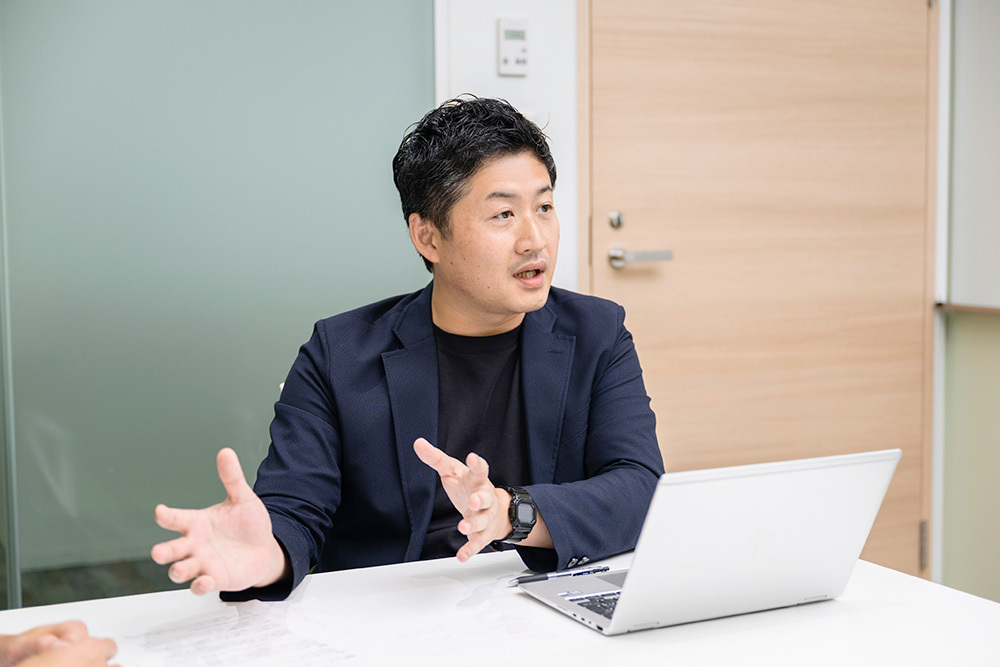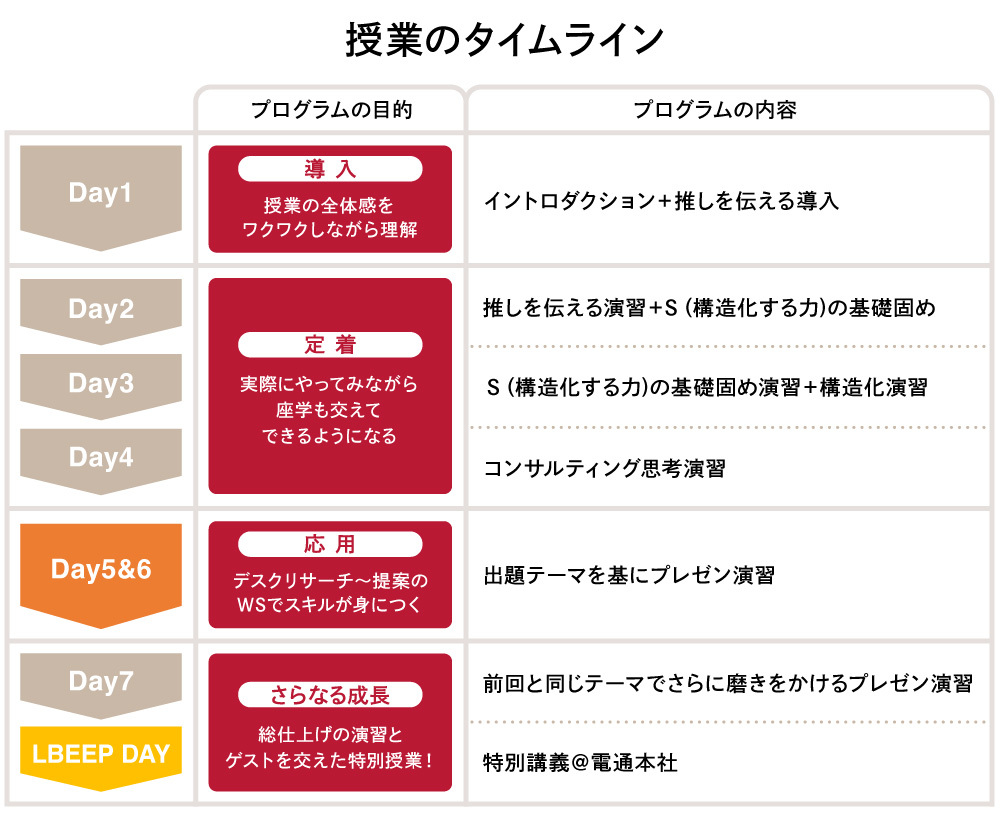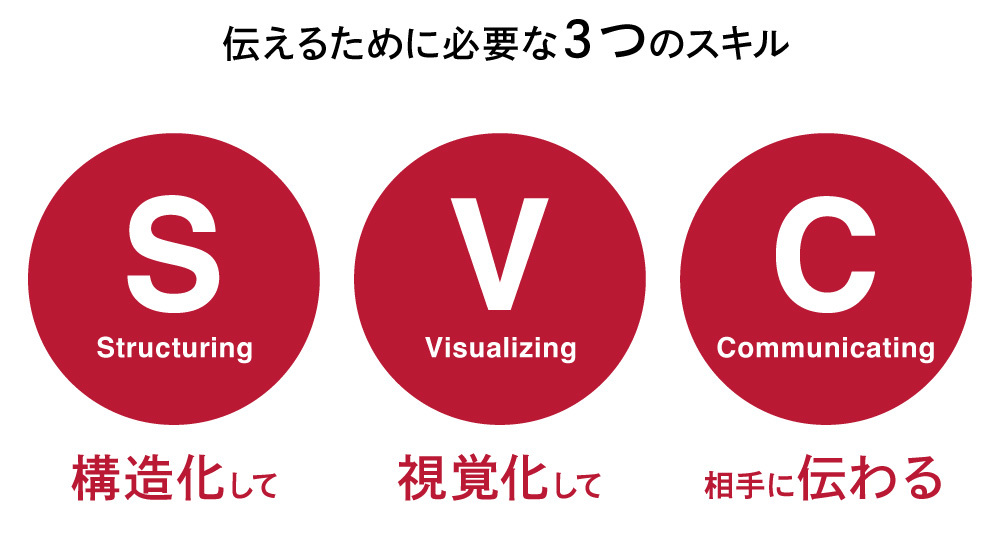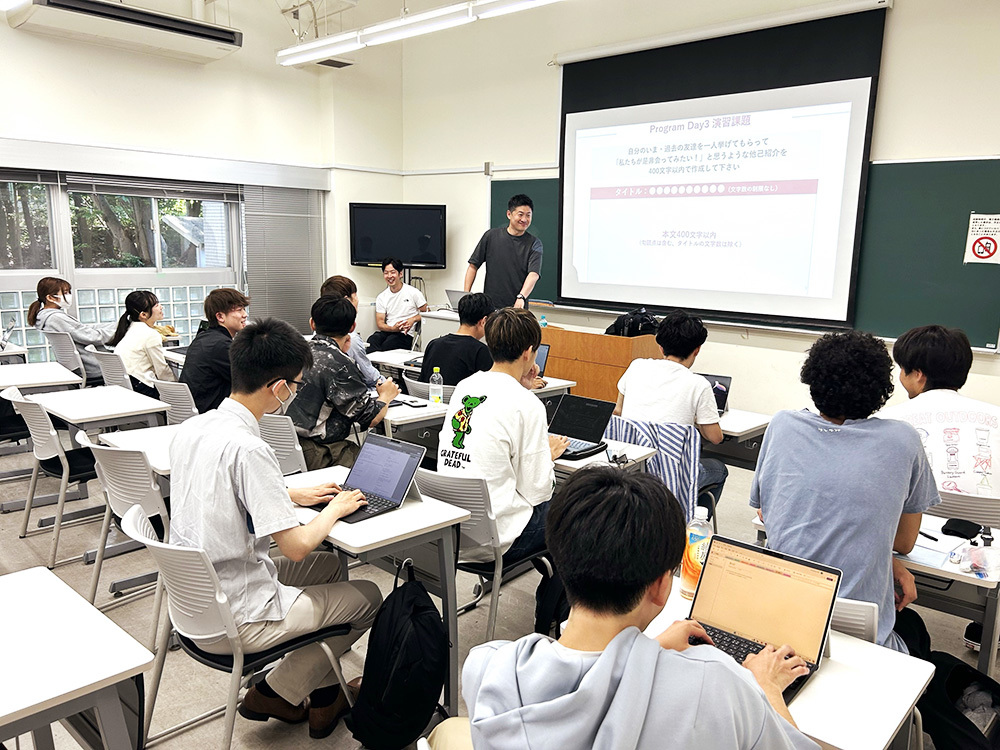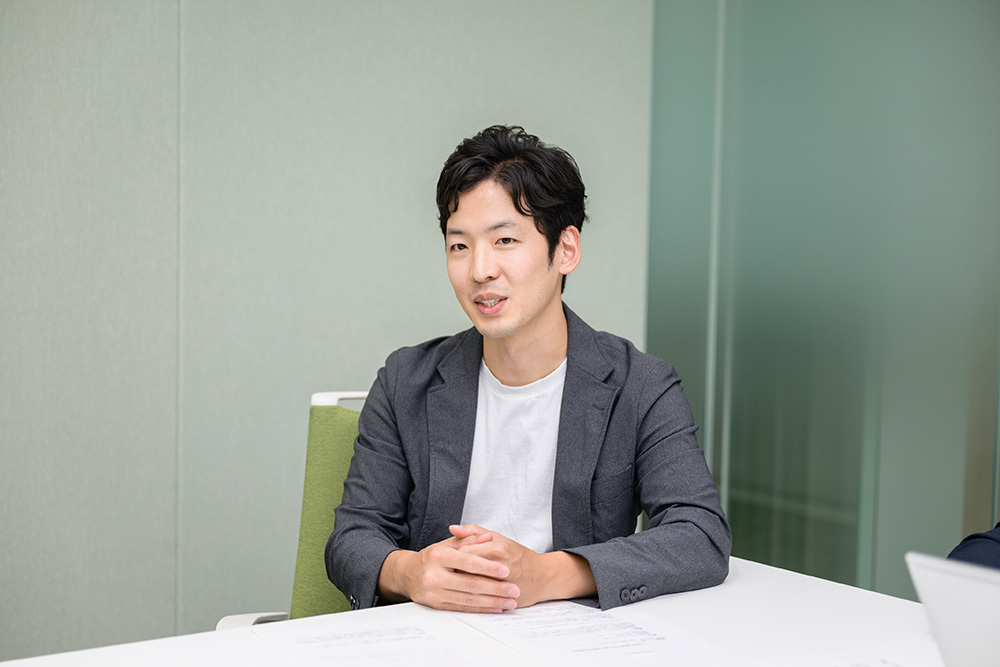
Project members planning and implementing the course. From left: Hiroshi Fukuda, Yuki Takayama, Shunsuke Furihata, Shuhei Kondo.
Transferring the "Power to Communicate" cultivated in advertising planning and production to university students. Starting in spring 2024, Yokohama National University launched a new industry-academia collaboration course with Dentsu Inc.'s participation. Targeted at first-year students in the university's Faculty of Economics, this small-group course focuses on enhancing problem-solving skills and communication abilities. This article features an interview with Dentsu Inc.'s Hiroshi Fukuda, Shunsuke Furihata, and Yuki Takayama, who planned and implemented the course. We asked about the background and objectives leading to its implementation, the course content, and student reactions. (Interview conducted June 21, 2024)
We wanted to create a class we would have wanted to take as students
──Dentsu Inc. has long taught students creative thinking and techniques through internships, workshops, and employee-led classes. What prompted the creation of this new program focused on "problem-solving skills" and "communication skills"?
Fukuda: As professionals in "communication techniques," Dentsu Inc. has long supported corporate advertising activities. We are currently transforming, expanding beyond advertising. We now work alongside companies and local governments to develop customer-centric new businesses and engage in urban development, solving problems in "non-advertising" areas centered on communication.
However, society today no longer presents easily solvable problems. To find better solutions for these open-ended challenges, diverse companies and organizations must collaborate and share ideas. Crucially, this requires the ability to effectively communicate one's thoughts within a team.
This "ability to communicate" is a skill needed not only by working professionals but also by students. In past conversations with students, I've noticed a lack of this ability. They can be wonderfully engaging in casual chat, yet when nervous, they suddenly struggle to speak effectively... Having experienced this myself as a student, I've wondered how I could support them.
Life is a continuous series of communications. Therefore, if students can develop this "ability to communicate" while still in school, it should lead to a better university experience, a better life afterward, and even a better society. Driven by this belief, I reached out to members interested in education and student development, and the project began.
──Did you, Mr. Furihata and Mr. Takayama, join the team because you shared this vision?
Furihata: Yes, that's right. At Dentsu Inc., where communication is our specialty, every employee naturally structures what they want to convey to society or their target audience and meticulously designs the logic behind it. Honestly, I didn't realize the value of this while I was at Dentsu Inc. But a few years ago, when I was seconded to another company and looked at Dentsu Inc. from the outside, I realized this might not be something everyone can do. It's not that they lack ability; they just don't know that designing logic, structuring messages, and knowing how to present them are crucial for effective communication. Because it took me so long to recognize the value of this "communication power," I felt that if students could learn and master these skills while still in school, it would foster more people capable of changing society. That's why I decided to join the project immediately.
Takayama: Beyond students acquiring communication skills, I also saw value in university classes providing opportunities for students to interact with working professionals. I wanted students to experience the thrill of realizing their potential in a corporate setting. Through these classes, I aimed to broaden their perspective, helping them view "work" from a broader, more comprehensive viewpoint.
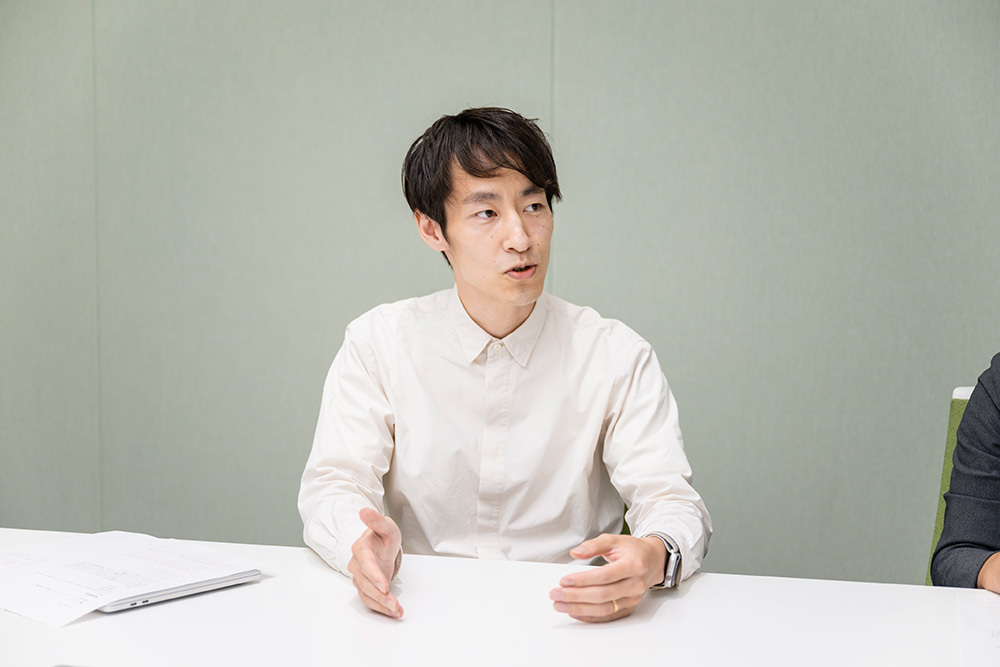
──So all three of you had various thoughts about "communication" and "work." Now, could you tell us how you came to teach at Yokohama National University?
Fukuda: I knew Professor Gosei Sekine of Yokohama National University from our days in the same law seminar during university. It was Professor Sekine who first told me about the "LBEEP " educational program, which became the starting point for this project. This "LBEEP" is a small-group teaching program designed to practically cultivate individuals who can tackle contemporary societal challenges from diverse perspectives. I found it a very interesting concept for a class.
I wondered if we could adapt this program into a "Communication Skills" course. So, I approached Professor Sekine with our vision, framed as "If we were university students again today, this is the kind of class we'd want to take." He showed great interest in the course concept.
From there, it was decided to implement it as part of an industry-academia collaboration experiment within the first-year Economics Department course "Introductory Seminar I." Rather than a one-off guest appearance, it was launched as an ongoing program where students could earn credits, which encouraged active participation.
Takayama: When planning the course, we expanded the industry-academia collaboration circle. Beyond Dentsu Inc., we also secured participation from Nomura Research Institute, a leading Japanese think tank, and Google, a world-renowned IT company. This course program, where diverse professionals approach students from a broader perspective, feels like an unprecedented form of education.
Honing Communication Skills Through the Theme of "Favorites"
──Please tell us about the actual content of the "Introductory Exercise I" class.
Furihata: The course is an 8-session program designed to prioritize hands-on learning for students.
To solve problems, we aim for students to understand three key skills: structuring what they want to convey, visualizing it, and communicating it to others. As part of this, students tackle the assignment of "communicating their favorite thing."
──Why did you choose "favorite" as the theme?
Takayama: Actually, during the height of the pandemic, we ran a similar initiative internally at Dentsu Inc. With limited real communication, we didn't really know who our colleagues were... So, to get to know each other, we launched a hybrid online/offline project called "My Favorite Things." Participants each presented their personal favorite thing. While "favorite" often brings to mind artists or anime characters, participants shared diverse passions like "folklore studies," "nitrogen," and "Kyogen," making it incredibly lively. That's why our team thought "favorite" would be perfect as a subject for the "Communication Skills" class.
On Day 1 of the class, after explaining how to structure key messages for problem-solving, a Dentsu Inc. employee who participated in "My Favorite Things" took the stage. They shared their passion for "folklore studies" with the students. When they presented what "favorite things" meant to them personally and what fascinated them about folklore studies, student survey responses included comments like "I was completely drawn into the talk" and "It was the most interesting class I've had so far." It was very well-received.
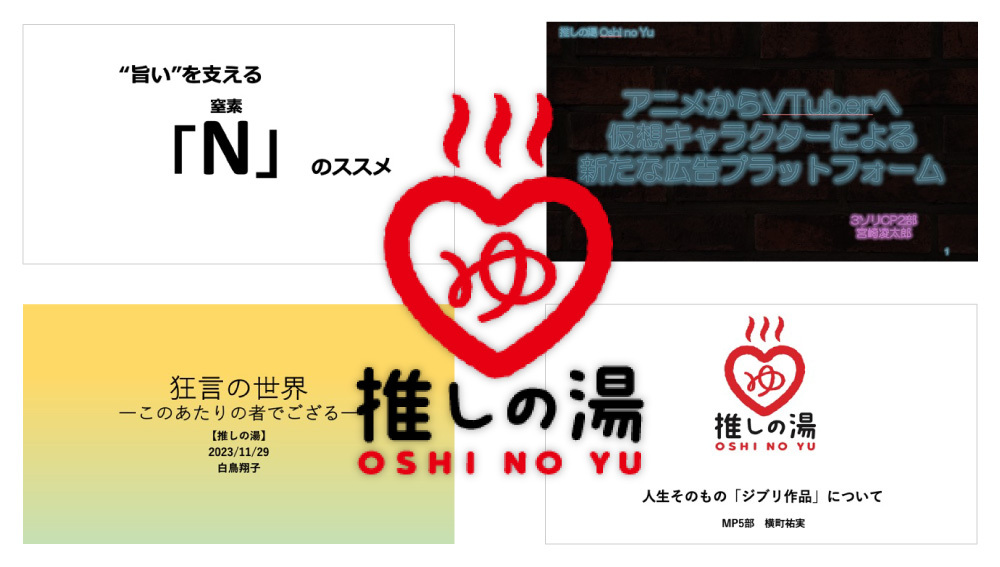
This initiative to invigorate communication within Dentsu Inc. began during the COVID-19 pandemic. It generated significant excitement, rapidly expanding networks between different departments by using employees' previously unknown "favorite things" as conversation starters.
Furihata: On Day 2, students split into three groups and practiced presenting their own "favorites." On Day 3, we focused on strengthening foundational "Structuring" skills and improving the ability to write persuasive text. We gave students the assignment: "Introduce a friend in 400 characters, making the reader want to meet them."
Fukuda: A 400-character draft is typically composed of about 10 sentences. It requires the structural skill to distill key points and build a narrative, along with the expressive ability to convey it in your own words. The writing styles were incredibly diverse. Some students submitted pieces exactly 399 characters long, others completely exceeded 400 characters, and some deliberately crafted endings that left readers pondering "Why?" Their varied approaches were truly educational for me as well.
We began the class by emphasizing that "practice makes perfect." Through exercises and assignments like these, I hope students truly grasp the importance of stepping up to the plate. I firmly believe that fostering an atmosphere where it's okay to say "I don't understand" is paramount in both the classroom and teamwork.
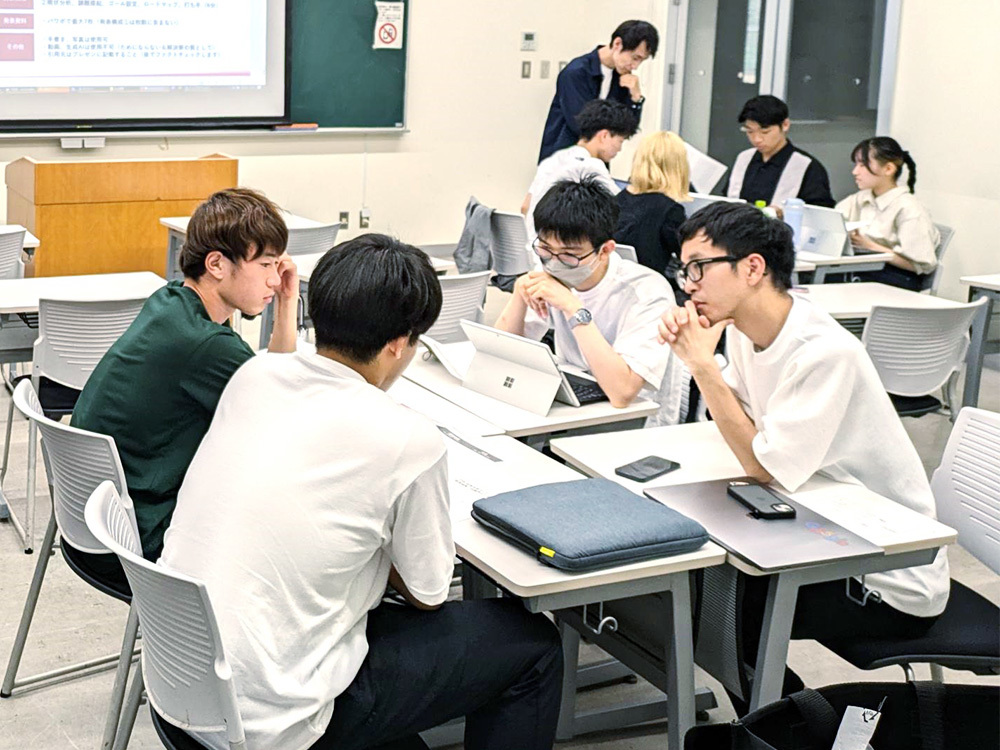
A scene from an actual class. During group work, students engage in thorough discussions with each other. The instructor facilitates the class by prompting dialogue and guiding the conversation.
Experimenting with an Audience-Driven Teaching Style
──What approaches have you taken when designing the course program?
Furihata: Rather than rigidly setting the content for all eight sessions in advance, we adopt an agile approach. We decide only the broad direction, then create lessons and assignments while observing student reactions and making improvements.
Takayama: Typically, university lectures take attendance at the start. In this program, we confirm attendance by having students scan a QR code at the end of class to complete a survey with feedback or questions. This survey gives us real-time insight into student reactions, understanding levels, and where they're struggling. We then use this feedback to refine the content and direction for the next class.
Furihata: We were concerned that unfamiliar terms like SVC and structuring might discourage some students. To address this, we minimize complex terminology, schedule question breaks for mutual confirmation, create opportunities for student participation during class, assign instructors to provide follow-up support, and conduct post-class surveys to gauge reactions and apply insights. We continuously monitor student engagement and implement PDCA cycles to refine subsequent sessions.
Fukuda: I strongly agreed with Mr. Furihata's approach to evolving the class into a better one. Particularly, the system using 2D barcodes for on-the-spot survey responses as a means to move from C (Check/Evaluation) to A (Action/Improvement) was easy to implement and functioned very well as a DX approach. The audience-driven approach, where we plan the next class by checking both students' real-time reactions and survey results, was fascinating. Precisely because everyone has smartphones, I felt confident we could build even more mechanisms to evolve our classes.
Innovation arises from truly connecting with one another
──What have you felt so far in these classes?
Takayama: The biggest discovery from teaching these classes is how much we ourselves learn. Each time we teach, I feel it's a space where "co-growth" happens—where we grow alongside the students. For working professionals involved in education, it's also a valuable opportunity to step back and observe ourselves objectively.
Furihata: I also notice significant changes in the students. Since these students are first-years who just entered university, they tended to seek immediate answers when the class first started. For example, they'd ask, "If we use this framework, will we get the answer?" But as the sessions progressed, I could clearly see the level of their questions steadily improving.
Takayama: Looking at the survey responses, I can also see their attitude toward the class becoming more positive.
Fukuda: People often say "communication skills" are important, but we believe there are two crucial things for developing them.
First, creating an atmosphere where students feel comfortable asking questions repeatedly.
The second is the number of slightly nerve-wracking opportunities to step up to the plate.
I believe these two elements are the keys to developing communication skills. I truly felt this when I met people at Dentsu Inc. who were growing rapidly.
This time, we consciously incorporated both elements into the class.
Through this class, students discovered each other's interesting sides, developed curiosity about one another, and started casual conversations like, "Hey, remember that idea we had? Should we actually try it?" This naturally evolved into a mood where people would say, "Hey, about that idea from before... why don't we actually give it a shot?"
When information flows freely between people, innovation naturally follows. Moving forward, I want to continue planning classes that empower students for their futures, using "communication" as our weapon, while leveraging the strengths of people across the Dentsu Group who are passionate about their respective fields. I also aim to contribute to building a better society.
◎Next time, we'll introduce the significance of this project from Yokohama National University's perspective and share students' real voices.





